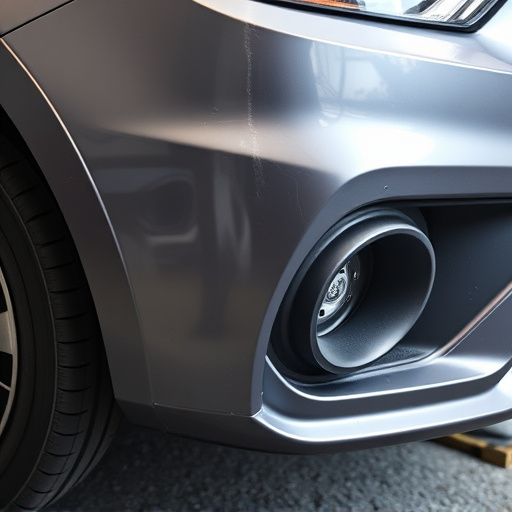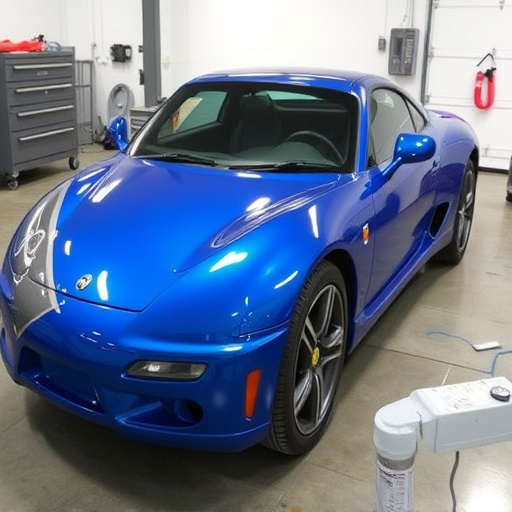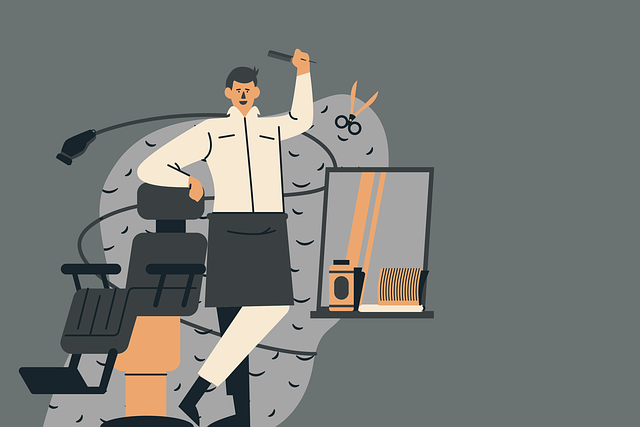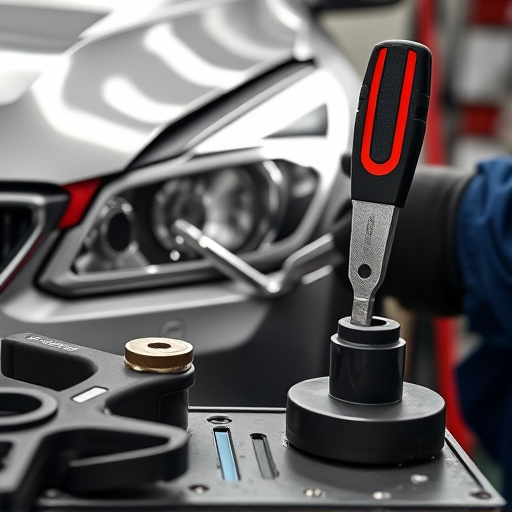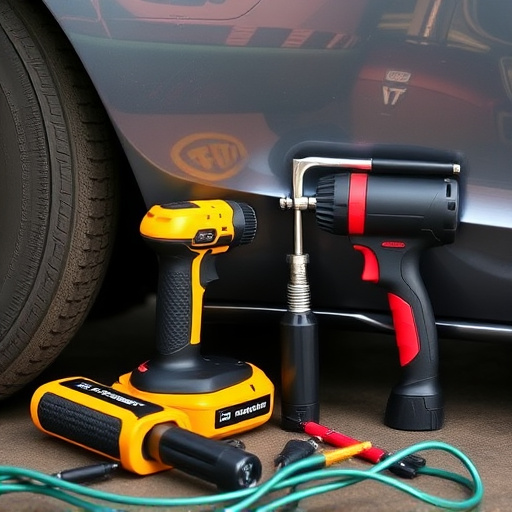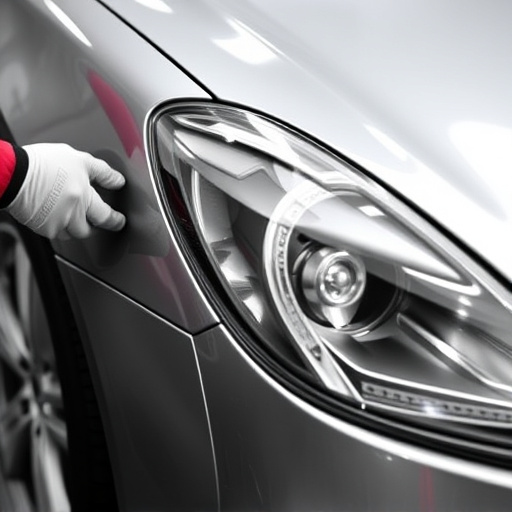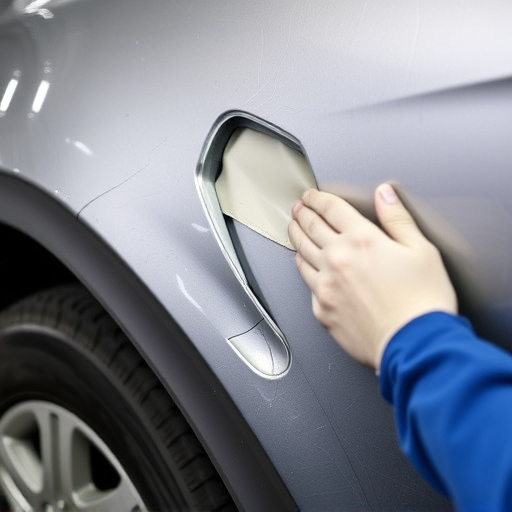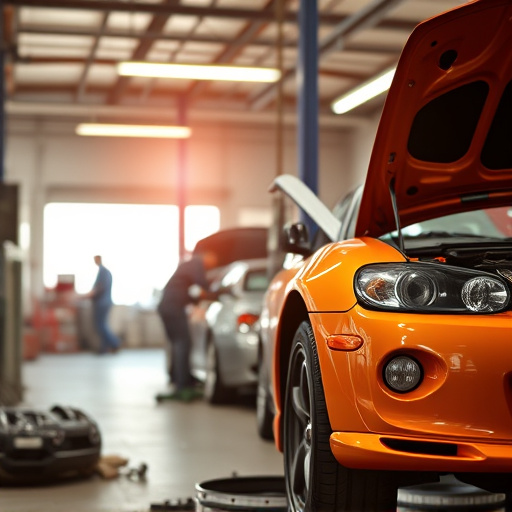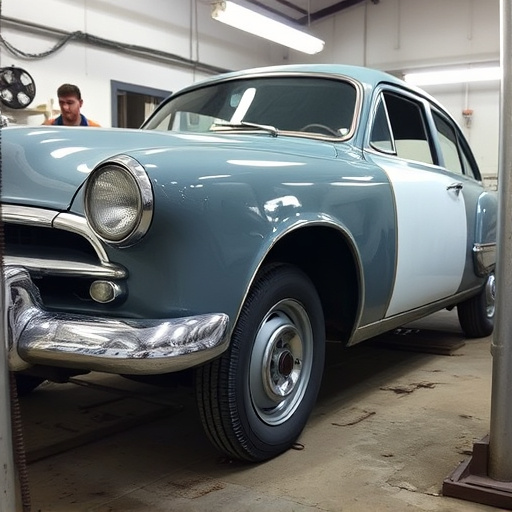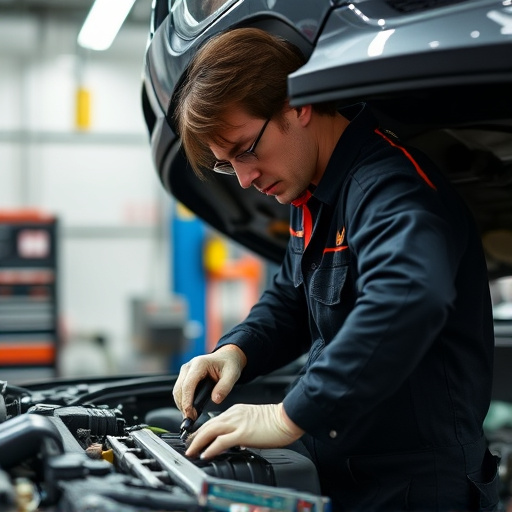Before repairing a car's body, prepare your workspace, gather high-quality tools and materials including new auto body panels, and ensure proper ventilation. Remove old panels with precision, using protective gear and stable support for heavy parts. Install new panels by inspecting the area, removing dents, securing them tightly with hardware, and following a meticulous step-by-step approach to restore structural integrity and aesthetic appeal.
Installing new auto body panels is a crucial task for any car owner aiming to restore their vehicle’s appearance. This step-by-step guide will walk you through the process, ensuring a seamless and accurate fit. From preparing your workspace and gathering essential tools to safely removing old panels and installing new ones, each stage is detailed for optimal results. Discover how to achieve a professional finish with these straightforward instructions, perfect for DIY enthusiasts or those seeking to enhance their automotive knowledge.
- Prepare Your Workspace and Gather Tools
- Remove Old Panels Safely and Accurately
- Install New Panels Step-by-Step for Perfect Fit
Prepare Your Workspace and Gather Tools

Before tackling any auto body repair job, preparing your workspace is key. Start by clearing a designated area where you’ll be working on the vehicle. Ensure proper ventilation since auto painting and collision center tasks can involve hazardous chemicals. Gather all necessary tools and materials, including new auto body panels, welding equipment, screws, primer, paint, and brushes or sprayers. This preparation will not only streamline the process but also ensure a safer environment for both you and your project.
Invest in high-quality tools designed specifically for auto body work to achieve the best results. Remember, faulty installations could lead to long-term issues. Properly prepared workspace and equipment are your allies in successfully installing new auto body panels, ensuring a smooth finish that complements the vehicle’s original design.
Remove Old Panels Safely and Accurately

When removing old auto body panels, precision is key to ensure a seamless fit for new ones. Begin by carefully disassembling any surrounding components that might be attached, such as trim or molding, using appropriate tools to avoid damage. This meticulous process involves unscrewing, unclipping, and detaching with the ultimate goal of preserving the car’s structural integrity.
Safety is paramount. Wear protective gear including gloves and safety glasses to shield yourself from sharp edges and debris. Employing proper techniques prevents accidents and ensures a clean workspace for subsequent steps. This includes using jack stands or a stable support system when necessary, especially for heavy panels, to maintain balance during removal.
Install New Panels Step-by-Step for Perfect Fit

Installing new auto body panels is a crucial step in any car repair or restoration project, ensuring both structural integrity and aesthetic appeal. Begin by gathering all necessary tools and materials, including your new panels, safety gear, and any required hardware. The first step is to carefully inspect the damaged area and remove any debris or loose pieces. This involves using the right equipment for the job, such as a hammer and chisel, to gently pry away broken components without causing further damage.
Once the area is cleared, it’s time to prepare the surface. This often includes dent removal techniques to create a smooth base for your new panels. For classic car restoration projects, this might involve meticulous hand work to ensure every detail aligns perfectly. After preparing the surface, carefully align and secure the new auto body panels using appropriate hardware like screws or clips. Ensure a tight fit by double-checking each panel’s placement before fastening it in place, addressing any gaps or misalignments promptly. This step-by-step approach guarantees that your car’s body is restored to its original condition, ready for the final touches of painting and finishing.
Installing new auto body panels requires careful preparation, precise removal of old ones, and a step-by-step approach for a perfect fit. By ensuring your workspace is ready, understanding the process, and using the right tools, you can effectively replace damaged panels, enhancing your vehicle’s aesthetics and safety. Remember, proper installation of new auto body panels is a crucial step in maintaining your car’s value and structural integrity.
